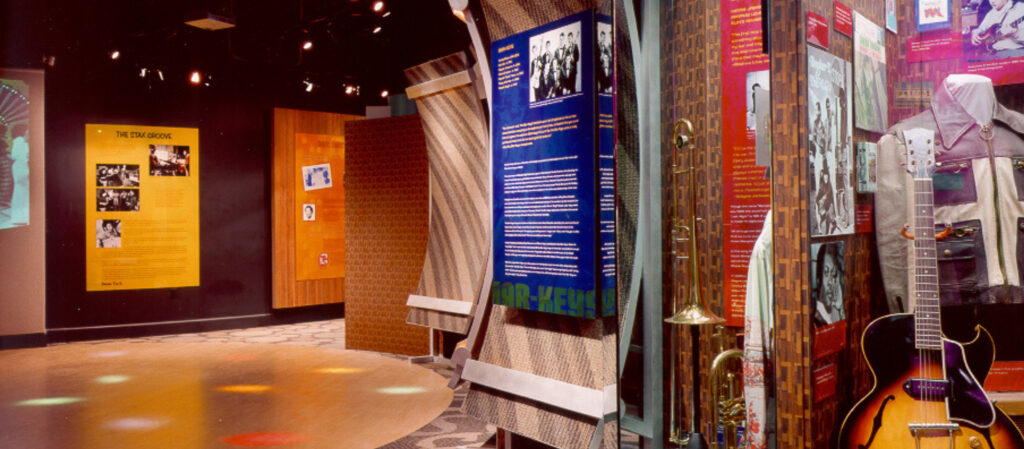African American Music History, an intricate tapestry of soulful melodies and vibrant rhythms, played an extraordinary role in shaping the musical landscape of the United States and beyond. From gospel and blues to jazz, R&B, and hip-hop, this rich heritage has left an indelible mark on the world. In honor of Black History Month, we embark on a journey into the legacy of African American Music History. We’ll explore the remarkable exhibits at the National Museum of African American Music (NMAAM) and the Stax Museum of American Soul Music, brought to life through the artistry of 1220 Exhibits.
National Museum of African American Music (NMAAM)
Harmonizing History
Nashville, often referred to as “Music City”, welcomed a new addition to its vibrant African American Music History in early 2021 – the National Museum of African American Music (NMAAM). Nestled amidst the city’s premier music history institutions, NMAAM stands as a testament to the evolution and profound impact of African Americans on American music.
Guiding visitors through a captivating timeline, NMAAM celebrates the cultural heritage that birthed spirituals, gospel, blues, jazz, R&B, and hip-hop. Additionally, the museum employs a brilliant fusion of large-scale graphics, interactive exhibits, and immersive soundscapes. These weave the tale of African American Music History.
The Musical Mosaic
At NMAAM, African American Music History becomes a vivid mosaic, shaped by influential African American artists throughout history. Large, geometric exhibit walls create a canvas upon which the multifaceted facts of music come to life.
Stax Museum of American Soul Music
Soulful Chronicles
The Stax Museum of American Soul Music, located in the original Stax studio building, is a sanctuary dedicated to the history of soul music. It provides a stage for the biographical and career highlights of the musicians who recorded with the Stax record label.
The Evolution of Soul
In the museum’s embrace, the story of soul music is revealed through state-of-the-art video footage of powerful sermons, gospel music performances, and interpretive reader rails housing precious artifact vitrines. This captivating narrative pays homage to early soul pioneers like Johnnie Taylor, Sam Cooke, Ike & Tina Turner, and Ray Charles. Their legacies are showcased through photographs, albums, instruments, clothing, films, and memorabilia.
Visitors are invited to shed their inhibitions and dance on the floor of a recreated club setting. This setting was inspired by the legendary “Soul Train” show of the 1970s. Larger-than-life projections transport you to an era of soulful dance and groovy tunes, providing an immersive experience like no other.
In the Studio With Legends
The culmination of the Stax Museum experience lies in a recreated control room and the associated Studio A. In this room, the soulful sounds of legends were born and recorded, becoming anthems of a generation.
Audiovisual screens bring to life musical outtakes from studio rehearsals and recording sessions. Original instruments, each a custodian of the legendary Stax sound, sit poised as if waiting for the next recording session to commence.
This Black History Month We Honor African American Music History
Music has always been a heartbeat, a reflection of the joys, struggles, and triumphs of a people. The National Museum of African American Music and the Stax Museum of American Soul Music stand as beacons. Each beacon aims to preserve and celebrate this rich heritage. Through the craftsmanship of 1220 Exhibits, these museums have become more than just exhibits. They are living tributes to the enduring legacy of African American Music History.
This Black History Month, let us honor the artists, the visionaries, and the innovators who have left an indelible mark on the world through their music. As we stand at the crossroads of history and artistry, we’re reminded that music is not just a melody. It’s a profound and enduring legacy.
From the heart of Music City to Memphis and beyond, these museums continue to resonate with the rhythms of the past, present, and future. So, as we celebrate Black History Month, let us remember that the soulful melodies and harmonious history of African American Music continue to shape our world, one note at a time.









